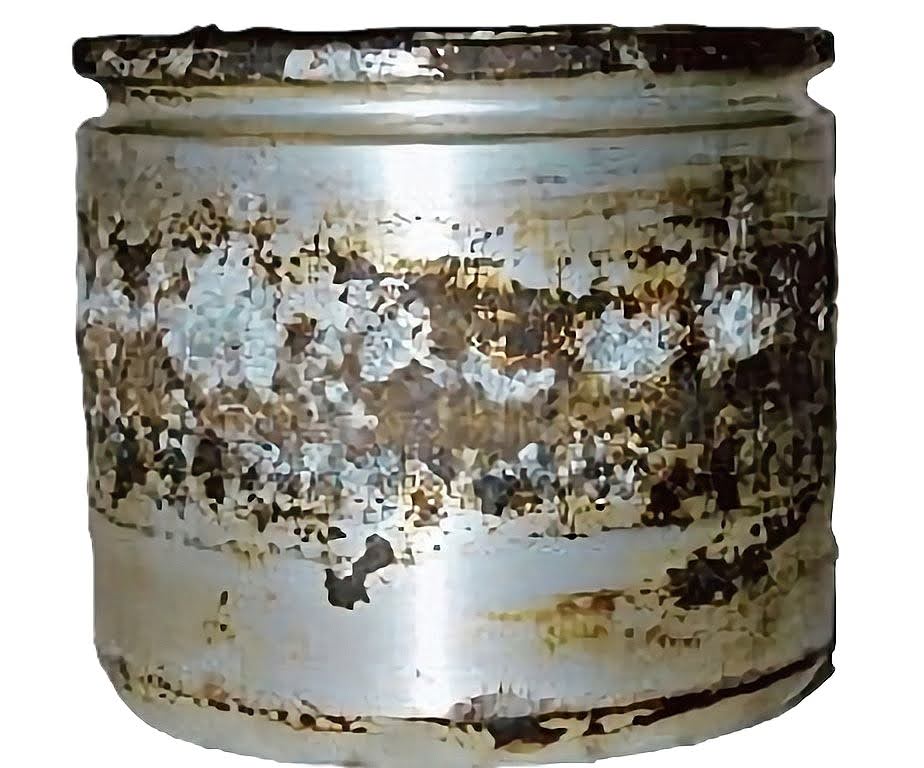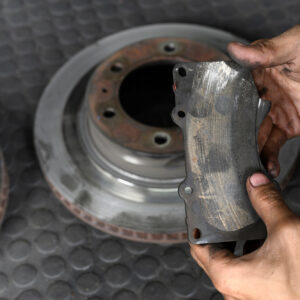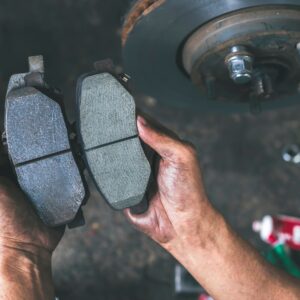The brake pads are arguably the most crucial part of a car’s braking system. Without them, you won’t have full control over the brakes. As such, replacing a worn pad should be a priority.
Unfortunately, there are cases when new brake pads wear out early.
Why Do New Brake Pads Wear Out Early?
The type of lining is one powerful determining factor for why new brake pads wear out early. Organic brake linings made from natural materials like rubber, glass, and resin tend to wear out the most quickly. These linings provide smooth and quiet braking performance but are less durable under heavy use.
But, let’s say you’re not using organic brake pads and let’s say you’re not stopping as often as a delivery driver or letter carrier. What else might be the reason for rapid brake wear?
Bad Calipers
The brake caliper houses the brake pads and the pistons. They slow the car’s wheel by extending their pistons against the brake pads, which presses the lining against the rotors, which are connected to the wheel hub, tire, and wheel, and that creates friction with the brake rotors, converting kinetic (movement) energy to heat energy (friction), thereby stopping the car.
Because the calipers squeeze the pads against the rotors, a stuck brake caliper piston will likely result in uneven brake pad wear, but you’ll also notice that the brakes either pull or keep the vehicle from accelerating as it should.

Bad Slide Pins
The brake calipers typically “float” on special pins. A damaged or corroded slide pin prevents the caliper from moving back and forth with tire revolution. This also decreases braking power and wears out the brake pads.

What Causes Uneven Brake Pad Wear?
Besides bad calipers and slide pins, internally clogged brake hoses, ABS hydraulic control unit failures, and other factors can cause uneven brake pad wear.. Anything that keeps the brakes applied when they should be released can cause uneven wear. Let’s discuss a few of them:
Not Using the Lower Gears
The gears on manual transmission cars are there for a reason. When driving downhill, shift to lower gears to minimize using the brakes to reduce the odds of brake pad wear and make for a safer drive altogether. Automatic transmissions have automatic engine braking when you let off the accelerator.
Driving at High Speed
Constantly driving at high speed followed by aggressive braking (as a habit) can lead to faster brake pad wear because it works harder to bring your vehicle to a stop. If you do this a lot, it’ll wear the brakes out faster.
Sudden Braking
Similarly, sudden braking is bad for your brake pads. It creates stress on the suspension and generates excess heat that could deteriorate the brake pads and warp the rotors.
To avoid this under normal circumstances, keep a safe distance between you and the vehicle in front. Doing so limits sudden braking and minimizes the risk of accidents.
To achieve the optimal distance, follow the three-second rule. Look for an object ahead of the road, and when the vehicle in front of you passes it, count how many seconds it takes for you to pass the same object. If it’s not at least three seconds, create more space.
Excessive Weight
Avoid driving with excess weight, as it creates more momentum for your car when moving. This leads to your braking system using more energy to stop the vehicle, putting avoidable stress on the brake pads. Of course, if you’re a professional plumber or construction person and you have to haul stuff, just proceed as you need to.
Sticky Caliper Pistons
A corroded piston results in sticky brake calipers. When this happens, the piston doesn’t slide smoothly, and the brake pads get stuck to the rotor. Pressure to the piston is either not being applied or isn’t being released when the caliper doesn’t engage. All these lead to the brake pads wearing quicker than usual.
Uneven Rotor Thickness
The thickness of your brake rotors affects your brake pads because an uneven rotor thickness makes it more difficult to wear evenly. Typically, rotors last up to 20,000 miles, but you could see yourself replacing them every 10,000 miles if the rotors don’t wear evenly.
What Happens When Brake Pads Wear?
A worn brake pad can damage the entire braking system, rendering it useless. This occurs because the pads are the cushion against the brake rotors, which create friction and slow down the wheels.
Once the pads wear, the metal beneath is exposed and makes contact with the rotors. Fortunately, brakes are designed to keep stopping the car for as long as possible even if the brake pad lining is completely gone. But when you start hearing any kind of noise, have the brakes checked.
Replacing the brake pads can be tricky, but you can do it yourself if you’re savvy with a wrench.
How to Prolong Brake Pad Lifespan
The easiest and most affordable way to prolong your brake pad’s lifespan is to drive properly.
As you might have noticed, most of the causes above are due to poor driving habits. Whether it’s failure to use the lower gears, sudden braking, or a misaligned car, all of these are preventable if you drive properly.
Similarly, you must also take good care of your vehicle by properly installing the calipers and pins, and removing any excess weight.
Get Replacement Brake Pads Today
Replacing your brake pads might seem like a hassle, but it’s nothing compared to the consequences of driving with worn brake pads. Worn brake pads can damage your vehicle’s brake rotors and calipers, both of which can also be expensive to repair. You can also expect your tires to wear unevenly from all the vibration caused by excessively worn brake pads. The worst part is that worn brake pads can increase your stopping distance, making it hard to stop your vehicle. Luckily, you don’t have to deal with any of this if you order from CarParts.com today.
At CarParts.com, you’ll find a wide selection of high-quality brake pads, all sourced from the most trusted manufacturers in the industry. Enjoy a hassle-free shopping experience with our easy-to-navigate website. The best part is, you don’t have to wait too long for your order to arrive. If you placed your order by 12PM ET, you can expect your new brake pads to arrive in as fast as two business days. You’ll be back on the road before you know it.
Don’t wait until your worn brake pads lead to even more damage or worse, cause an accident. Check out our catalog of replacement brake pads at CarParts.com, and get one for your vehicle today!
Any information provided on this Website is for informational purposes only and is not intended to replace consultation with a professional mechanic. The accuracy and timeliness of the information may change from the time of publication.







































